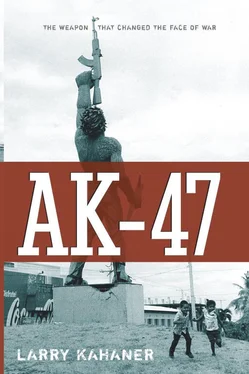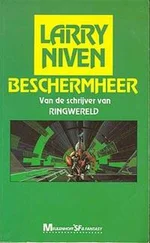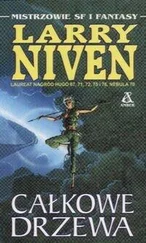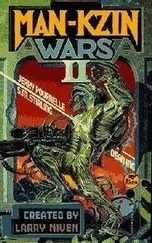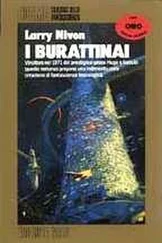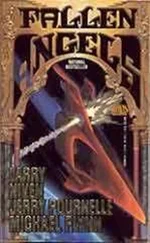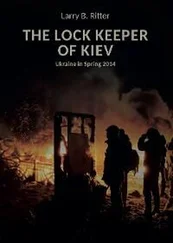Larry Kahaner - AK-47
Здесь есть возможность читать онлайн «Larry Kahaner - AK-47» весь текст электронной книги совершенно бесплатно (целиком полную версию без сокращений). В некоторых случаях можно слушать аудио, скачать через торрент в формате fb2 и присутствует краткое содержание. Город: Hoboken, Год выпуска: 2007, ISBN: 2007, Издательство: John Wiley & Sons, Inc., Жанр: История, military_history, на английском языке. Описание произведения, (предисловие) а так же отзывы посетителей доступны на портале библиотеки ЛибКат.
- Название:AK-47
- Автор:
- Издательство:John Wiley & Sons, Inc.
- Жанр:
- Год:2007
- Город:Hoboken
- ISBN:9780470315668
- Рейтинг книги:3 / 5. Голосов: 1
-
Избранное:Добавить в избранное
- Отзывы:
-
Ваша оценка:
- 60
- 1
- 2
- 3
- 4
- 5
AK-47: краткое содержание, описание и аннотация
Предлагаем к чтению аннотацию, описание, краткое содержание или предисловие (зависит от того, что написал сам автор книги «AK-47»). Если вы не нашли необходимую информацию о книге — напишите в комментариях, мы постараемся отыскать её.
AK-47 — читать онлайн бесплатно полную книгу (весь текст) целиком
Ниже представлен текст книги, разбитый по страницам. Система сохранения места последней прочитанной страницы, позволяет с удобством читать онлайн бесплатно книгу «AK-47», без необходимости каждый раз заново искать на чём Вы остановились. Поставьте закладку, и сможете в любой момент перейти на страницу, на которой закончили чтение.
Интервал:
Закладка:
FARC had no experience handling such large shipments, so they sought help through intermediaries from Vladimiro Montesinos, commonly known as “Peru’s Rasputin” for his puppetmaster control of President Alberto Fujimori. Montesinos began his career in the army in 1965 as a cadet and studied at the U.S. Army’s School of the Americas (now Western Hemisphere Institute for Security Cooperation) at Fort Benning, Georgia. The school, dubbed the “School of Assassins” by its opponents, had long been criticized as a training ground for military officers of repressive right-wing Latin American nations who used techniques they learned from U.S. instructors to torture and kill political foes.
In September 1976, Montesinos stole a blank army travel form and visited the U.S. embassy in Lima, where he received a free flight to the United States. Saying that he was an aide to Prime Minister General Guillermo Arbulú, he met with State Department and CIA officials. A Peruvian general saw him give a talk at the Inter-American Defense College and reported him. Upon his return to Peru, authorities immediately arrested Montesinos, and he was placed in prison for one year for desertion and lying.
Shortly after his release in February 1978, Montesinos enrolled at San Marcos University to study law. Only a few months later, using a forged degree, he registered as a lawyer with the Superior Court of Lima and became a member of the Colegio de Abrogados de Lima, an organization similar to a bar association. His clients were Colombian drug dealers, and he became involved in the trade himself through ownership of warehouses and manufacturing facilities used by drug dealers. He also sold classified documents in 1984 to Ecuador about Peru’s weapons purchases from the Soviet Union.
Montesinos achieved a reputation as the “go-to lawyer” for anyone involved in high-level crime and corruption, and this is how he met Alberto Fujimori, a candidate in the 1990 elections accused of underpaying his taxes by undervaluing real estate sales. The accusations were so massive that the attorney general was preparing criminal charges against him. Through Montesinos’s contacts and influence, at least one witness was persuaded to change his testimony, and files that would have indicted Fujimori were altered. Montesinos also helped Fujimori produce a birth certificate proving that he was born in Peru and not Japan so he could run for president.
When Fujimori was elected president, Montesinos became his right-hand man and was secretly put in charge of the Servicio de Inteligencia Nacional (SIN), Peru’s intelligence service. By convincing Fujimori that his life was in continual danger from enemies of the state, Montesinos fed the president’s paranoia and did away with opponents who stood in their way. Through a death squad known as Grupo Colina, he solidified his position, eventually controlling Peru’s military. He undoubtedly became the most powerful person in Peru and arguably all of South America.
Montesinos went into business with the country’s drug dealers, offering them protection. At the same time, the CIA put him on their payroll at $1 million a year for ten years to fight drug trafficking. Curiously, a 1996 U.S. Drug Enforcement Administration document showed that the administration knew that Montesinos took protection money from Peruvian drug dealers, but the CIA continued to deal with him.
FARC officials figured that if anyone in the region could handle their AK purchase, it was Montesinos. Through a Miami contact, he got in touch with Jordanian officials who could fill such a large order. Montesinos showed them purchase documents signed by Peruvian army officials giving the deal the appearance of a white-market transaction. Jordanian authorities chose Lebanese-born arms broker Sarkis Soghanalian, who had worked with the CIA during the cold war, to handle the details. At the request of the Reagan administration, Soghanalian had helped Saddam Hussein purchase weapons for his war with Iran, the same weapons that were later turned against American GIs during the Gulf wars.
Jordanian authorities contacted the CIA’s chief in Amman to make sure this sale was vetted because of the close military relationship between the two countries. Soghanalian, too, who considered the United States a major customer, made certain that the CIA signed off on the sale. They did.
Even though FARC requested ten thousand AKs, the purchase order was for fifty thousand. The price came to about $75 a rifle—$55 for the weapon, $10 for shipping, and $10 for packing and handling. Soghanalian readied the first shipment of ten thousand AKs but thought it odd that the Peruvians wanted the cargo airdropped to troops near the Colombian border. Nevertheless, since Montesinos had suggested further weapons sales, for a lot more money, he went along. Later, he denied knowing that the weapons would end up in the hands of Colombian rebels, but as he was an experienced arms dealer, and a follower of world hostilities, it’s difficult to believe that he didn’t have an inkling about their final destination.
From December 1998 through April 1999, five Hungarian-registered cargo planes carried ten thousand AKs from Amman, through Algeria, Mauritania, and Cape Verde to the Caribbean islands of Trinidad and Tobago or Grenada. From there, the rifles were flown to Iquitos, Peru. The airdrops occurred in full view of U.S. radar systems and spy satellites, which were always scanning for drug traffickers. U.S. and Colombian authorities never hindered these shipments.
The plan was discovered in July 1999, when Colombian troops found AKs with East German markings. They traced them to Jordanian stockpiles, and the scheme unraveled. Soghanalian claimed that he learned from his U.S. contacts that the rifles had been sold to FARC after Montesinos missed a payment, and the arms dealer had stopped further shipments pending his inquiry.
As more details emerged about Montesinos’s arming of Colombian rebels, Fujimori’s administration began to fall apart. In public statements, Montesinos said he did not know how the weapons ended up in Colombia, and even boasted that his office had arrested Peruvian army officers involved in the airlifts. But by then it was too late. Two days after videos emerged showing Montesinos bribing a congressman to support the president, Fujimori announced his intention to resign, and Montesinos fled to Venezuela. He was later extradited to Peru, where he was convicted and sentenced to fifteen years on various charges including bribing TV executives to support Fujimori. Authorities charged him in connection with the AKs sale, but he has not yet been tried. Fujimori escaped to Japan, faxed his resignation, and vowed to return someday to run again for president.
Why would Montesinos, a staunch anti-Communist, sell AKs to left-wing Colombian rebels? In public, he and Fujimori often complained that the Colombian government was too soft on rebel groups.
Several theories have been suggested, with the simplest being greed. Although Montesinos had already amassed a fortune estimated at more than $260 million, he could probably make a decent profit selling fifty thousand AKs. The other possibility, put forth by critics of the CIA, is that a well-armed FARC presented an increased danger to U.S. interests. Seeing this new threat, Congress would be obliged to pass the budget for the controversial Plan Colombia. These funds would benefit CIA and CIA-connected private contractors who would be used for some of the work. Montesinos had been on the CIA payroll for some time and was a cooperative operative.
A more intriguing possibility, one that embraces all the others, hinges on the configuration of these particular East German AKs and the rounds they fired. The surplus rifles were an AK version known as MpiKM that used the 7.62 × 39mm ammunition as opposed to the 7.62 × 51mm, which was more common in South America and therefore less expensive. At the time, a 7.62 × 39mm bullet cost about 5,000 Colombian pesos ($2 U.S.) and the 7.62 × 51mm cost about 1,000 pesos (42 cents). Some people suggested that Montesinos had perpetrated the perfect deal. Not only would he have made a personal profit, he would have curried favor with his CIA handlers, and as a bonus he would have weakened FARC’s financial and strategic position by forcing them to buy more expensive and hard-to-get ammunition in the future.
Читать дальшеИнтервал:
Закладка:
Похожие книги на «AK-47»
Представляем Вашему вниманию похожие книги на «AK-47» списком для выбора. Мы отобрали схожую по названию и смыслу литературу в надежде предоставить читателям больше вариантов отыскать новые, интересные, ещё непрочитанные произведения.
Обсуждение, отзывы о книге «AK-47» и просто собственные мнения читателей. Оставьте ваши комментарии, напишите, что Вы думаете о произведении, его смысле или главных героях. Укажите что конкретно понравилось, а что нет, и почему Вы так считаете.
